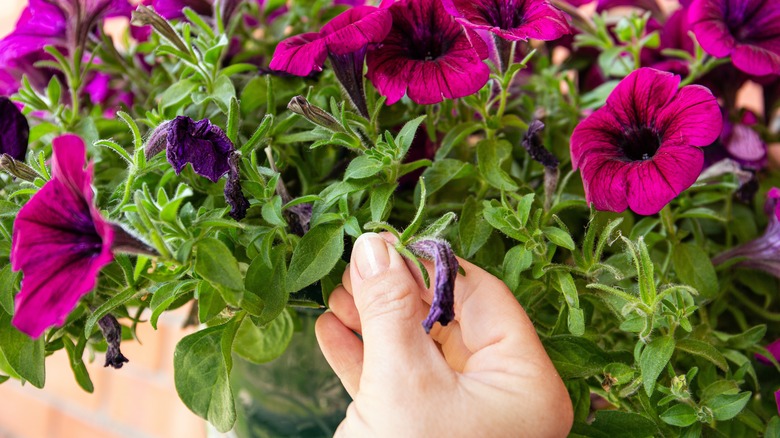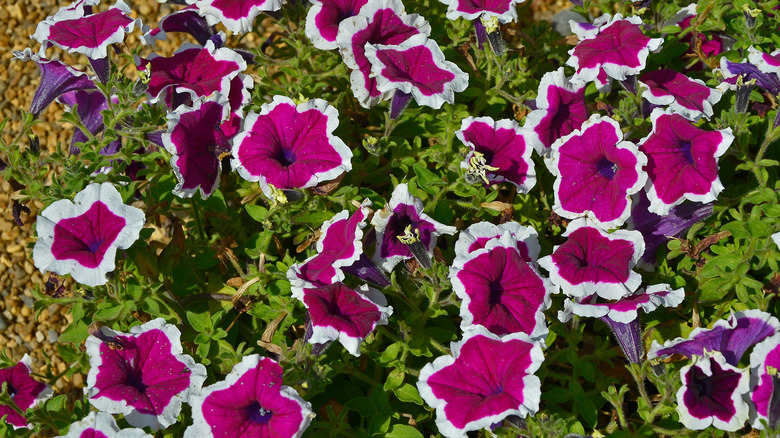Petunias are stunning flowers that are often a staple in ornamental gardens. They come in so many varieties of colors that you can’t help but collect them all. You’ll want to keep your petunias for as long as possible, but their blooms eventually wilt. Luckily, you can keep the flowers coming by pruning back the wilted flowers. There’s a right way to do it, though, and many gardeners don’t realize it. Simply removing the flower heads isn’t enough — you need to get the entire stem it grew on.
When you prune petunias correctly, you’ll have gorgeous blooms until the cold weather kills them. Pruning them will not only help the plant look good, but it will encourage new growth and help the plant stay healthy, which should reduce the chances of it contracting any diseases. Whether you grow your petunias in a flower bed or hanging basket, keep pruning them at the base for the best results.
Don’t just remove the petals

A common mistake people make when deadheading their petunias is only removing the flower head or the petals. If you look at a petunia, you’ll see that the petals come from a long conical tube attached to a stem. The seeds are located in the tube, so you need to get the entire flower head — tube and all — to gather the seeds. If the seeds are left behind, the petunias will spread rapidly next year to the point of being weedy.
When deadheading petunias, It is vital to get the stem attached to the flower head. Grab the base of the stem where it is attached to the main stem. You should be able to pinch it off with your thumb and finger, but if it’s being stubborn you can use scissors or garden shears if needed. You’ll know it’s time to deadhead petunias when the petals have wilted. The petals will either be crunchy or soggy based on the weather.
Keep your petunias pretty

Deadheading blooms is the key to long-lasting petunia plants. You can ensure they stay pretty for as long as possible by staying on top of the pruning. Prune the flowers as soon as they start to wilt after having been bloomed and open. If you can’t check the flowers daily, at least do it once each week. Doing so will help the plants grow bushier and look fuller, leaving you with a lush-looking flower bed. As you deadhead the spent blooms, cut leggy stems back halfway to promote bushy growth.
If constant pruning isn’t an option for you, look for self-cleaning petunias. Supertunias by Proven Winners have been bred to prune themselves by losing their petals in the wind. They’re sterile, meaning they can’t be propagated by seed, so any flower heads left behind won’t create a cluttered bed next year. However, this could be a downfall of self-cleaning petunias if you prefer to have them come back each year.



